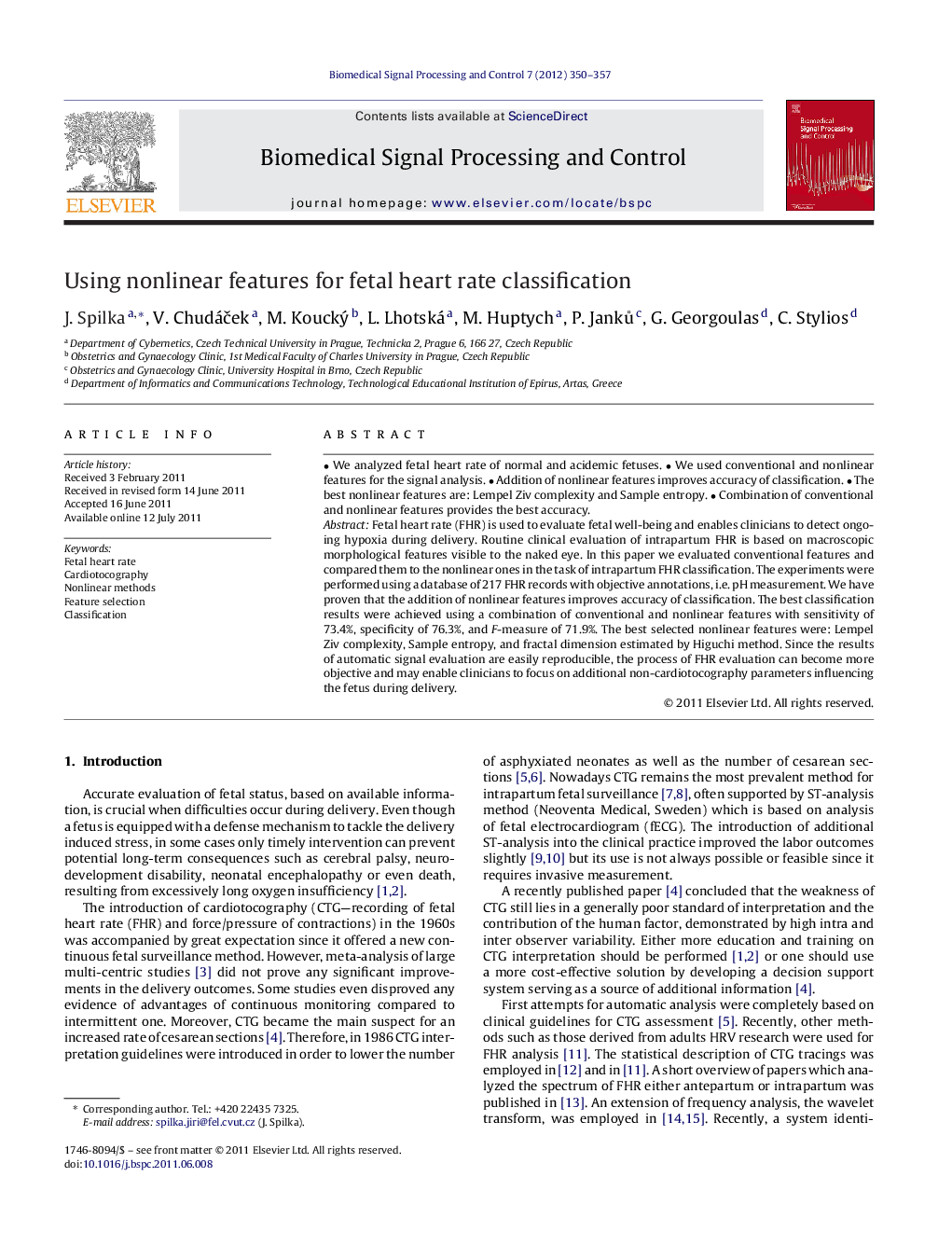| Article ID | Journal | Published Year | Pages | File Type |
|---|---|---|---|---|
| 558189 | Biomedical Signal Processing and Control | 2012 | 8 Pages |
• We analyzed fetal heart rate of normal and acidemic fetuses. • We used conventional and nonlinear features for the signal analysis. • Addition of nonlinear features improves accuracy of classification. • The best nonlinear features are: Lempel Ziv complexity and Sample entropy. • Combination of conventional and nonlinear features provides the best accuracy.AbstractFetal heart rate (FHR) is used to evaluate fetal well-being and enables clinicians to detect ongoing hypoxia during delivery. Routine clinical evaluation of intrapartum FHR is based on macroscopic morphological features visible to the naked eye. In this paper we evaluated conventional features and compared them to the nonlinear ones in the task of intrapartum FHR classification. The experiments were performed using a database of 217 FHR records with objective annotations, i.e. pH measurement. We have proven that the addition of nonlinear features improves accuracy of classification. The best classification results were achieved using a combination of conventional and nonlinear features with sensitivity of 73.4%, specificity of 76.3%, and F-measure of 71.9%. The best selected nonlinear features were: Lempel Ziv complexity, Sample entropy, and fractal dimension estimated by Higuchi method. Since the results of automatic signal evaluation are easily reproducible, the process of FHR evaluation can become more objective and may enable clinicians to focus on additional non-cardiotocography parameters influencing the fetus during delivery.
